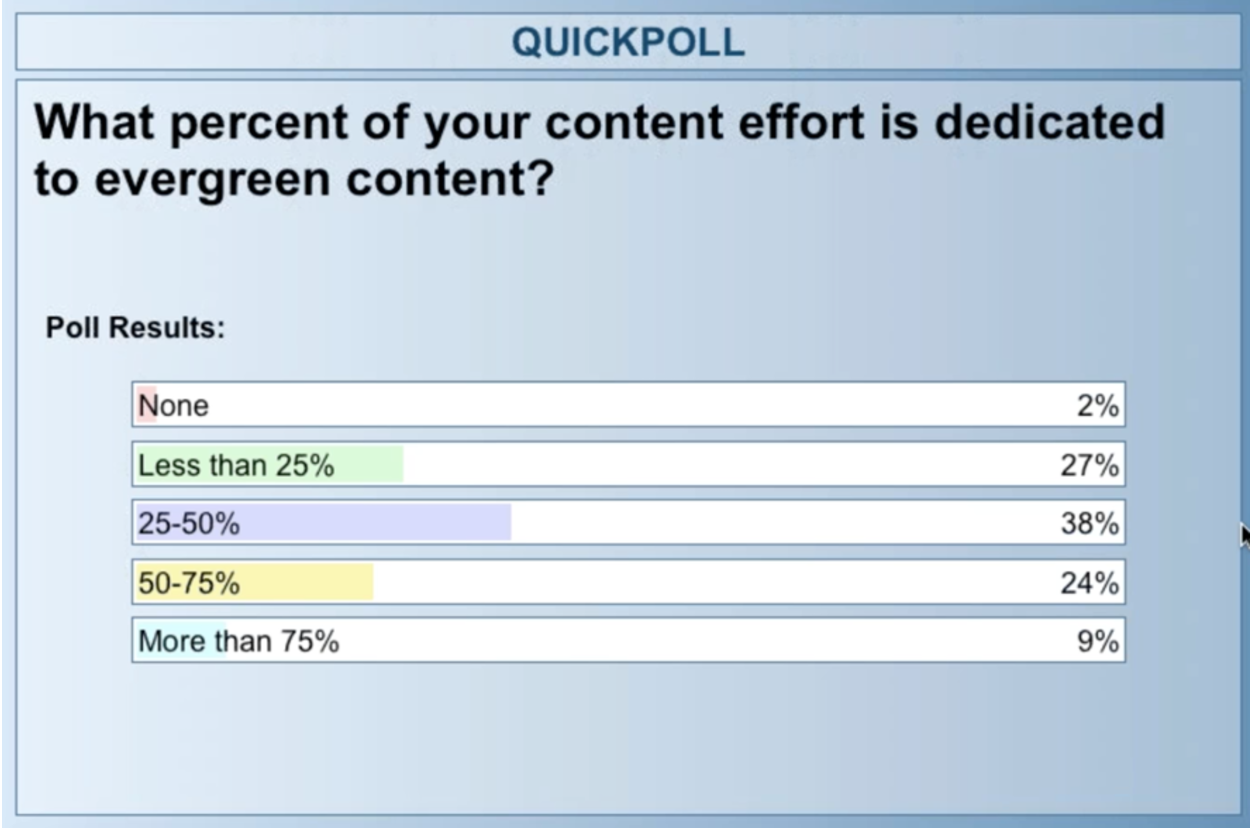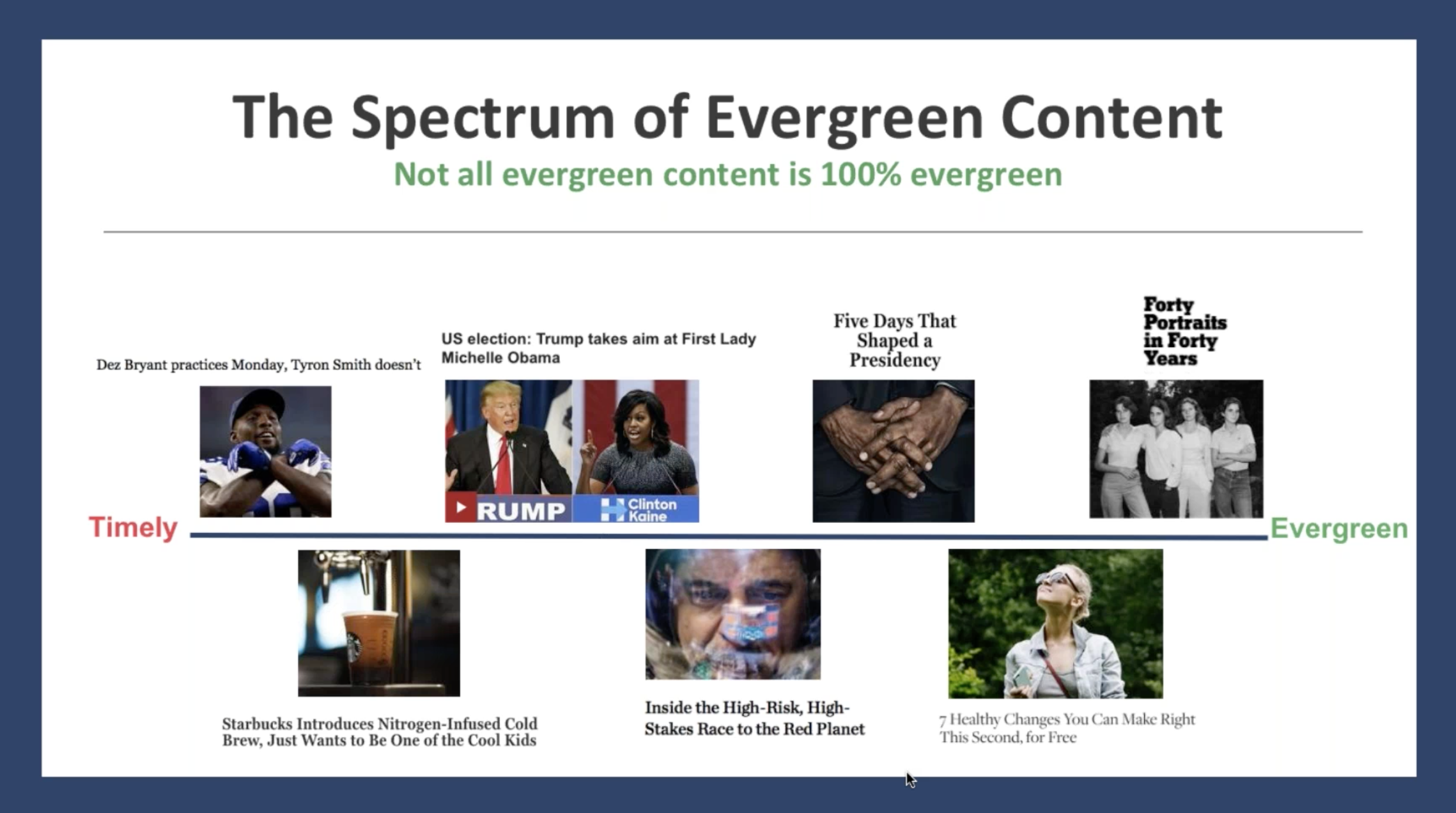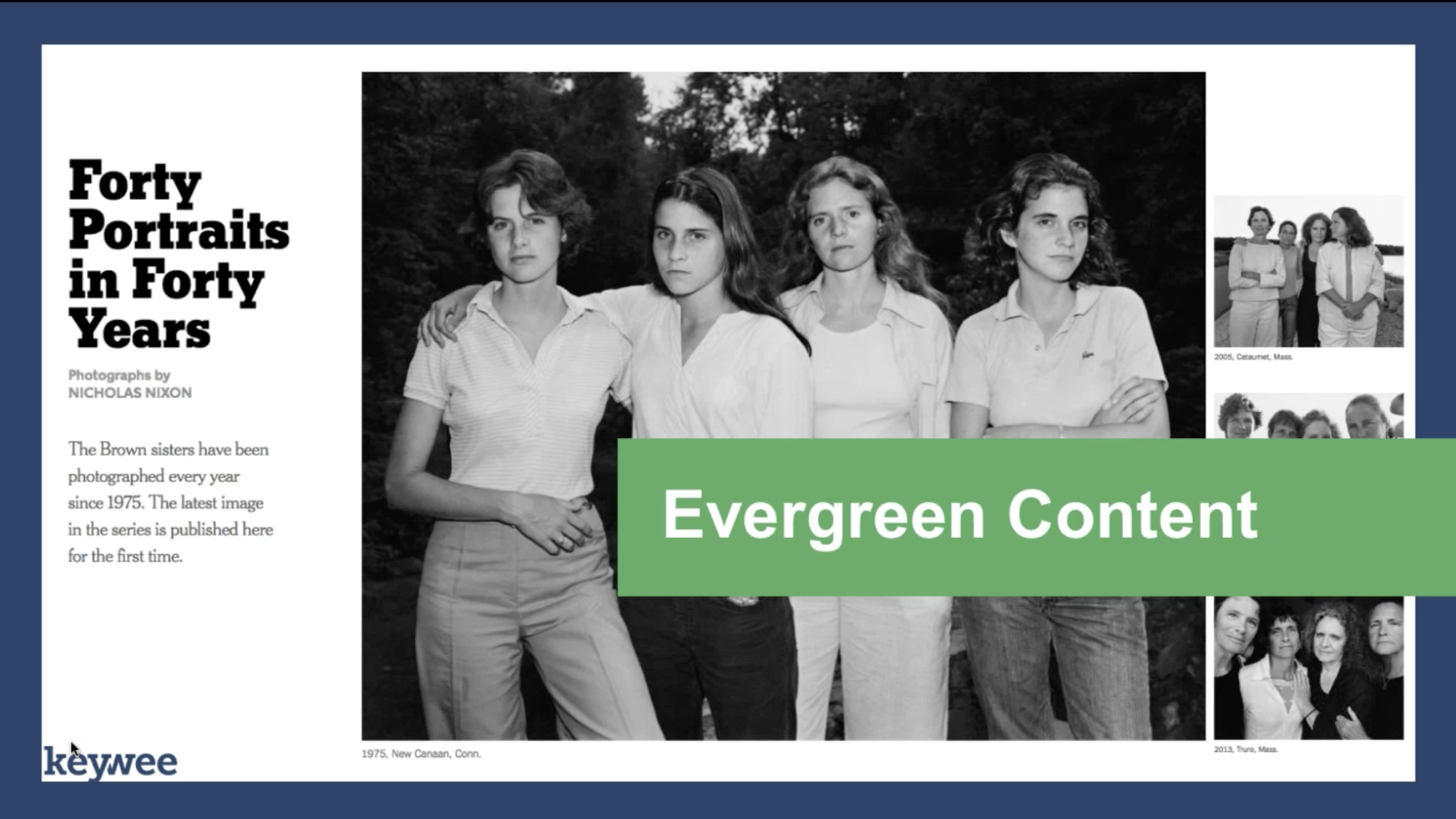“7 Things Wildly Successful People Do Before 7:30 a.m.”
“Five Days That Shaped a Presidency”
“100 Greatest Moments in Sports History”
While the articles that accompany the above headlines differ greatly in terms of their content, they do have one trait in common: they’re all strong examples of evergreen content.
In our latest webinar, “The Gift that Keeps on Giving: Making the Most of Evergreen Content,” we explored the concept of evergreen content, the many ways that publishers can benefit from it, and real-world strategies to help guide your approach. We also discussed how the timelessness of evergreen content makes paid distribution, especially on social platforms, particularly effective.
To kick off the webinar, we polled the audience members to find out how much of their content effort is spent focusing on evergreen content. The most common response was in the range of 25 – 50%, though a considerable number of responses actually fell above 50%.
Now let’s jump into the (evergreen) content of the webinar.
What is Evergreen Content?
Generally speaking, evergreen content is content that continues to stay relevant and useful to readers over time with little or no upkeep. It’s interesting and engaging long past its original publication date, which means that publishers who best leverage evergreen content can get a lot of mileage out of it.
Throughout the webinar we shared examples of how some of the world’s leading publishers are incorporating evergreen content into their overall content strategy, like the articles below from The Cut and PureWow.
What Makes the Best Evergreen Content?
Evergreen content comes in many shapes and types (not color though), but typical formats include lists, instructional “how-to” tutorials, interviews, tips, and videos. You’ll notice that these formats lend themselves well to content that is informative and educational.
Topics for evergreen content also vary widely, but most often fall into the following categories: love and romance, food, finance and saving money, parenting, weight loss, jobs and careers, and travel.
Important factors to consider when choosing or creating evergreen content strategy include:
- Quality: it must be interesting and useful to your readers
- Address a Need: it should answer a question that your audience has
- Compelling Headline: it should not be clickbait – you should sell the content in your headline
- Readable: the format should be easily digestible, so try to include headings, images, and bullet points
We asked the webinar attendees to volunteer examples of evergreen content that performed best for them. Here were some of our favorites:
- 11 Things Humans Do that Dogs Hate
- This Thing Makes Bacon, Eggs, Toast and Coffee at the Same Time
- I’m A Family Psychologist And These Are The 20 Most Common Parenting Mistakes I See
- 12 Empowering Children’s Books to Add to Little Girls’ Bookshelves
How to Fall Asleep In Under 1 Minute - 5 Worst (or Best?) Airbnb Horror Stories
It’s also important to point out that not all evergreen content must be able to stand the test of time forever. The graph below illustrates how it can exist on a spectrum that runs from very timely to 100% evergreen. So although not all of your evergreen content will be relevant for decades to come, there’s a good chance that some of your less timely content will still be effective and engaging in the weeks or even months ahead.
Advantages of Evergreen Content
The benefits of evergreen content for brands and publishers run the gamut. Here are some of its major advantages.
Huge ROI – Although there are upfront costs to producing evergreen content, publishers can continue to profit from it over a long period of time.
Predictable High Performance – The performance of evergreen content is typically much more easy to predict than content centered around current events. In the long run, evergreen content actually performs better than content that’s timely.
SEO Benefits – A long-tail benefit of evergreen content is its positive impact on your site’s SEO. In fact, Hubspot found that 76% of blog views come from old, evergreen posts.
Why Evergreen Content is King in a Paid Distribution World
Paid distribution, such as Facebook sponsored posts, is an especially effective way to get the most out of your evergreen content. One of the primary reasons is that it’s a very scalable strategy, both from a distribution angle (as in paying more for wider reach), as well as an audience development standpoint. You can continue to find new, high performing audiences for the same piece of content through paid distribution.
Another reason that paid distribution is an ideal strategy for evergreen content is that, rather than posting it on your newsfeed for all of your followers to see, you can instead precisely target those who are likely to be interested in the content.
Watch the Webinar
All of the above and more is covered in our webinar, “The Gift that Keeps on Giving: Making the Most of Evergreen Content.”
A few of the additional topics touched on include:
- Tips for re-distributing evergreen content
- Repurposing article formats for evergreen content
- How evergreen content can be most valuable for engaging your core audience
Fill out the form to watch the webinar: <h/3>
Interested in learning more about Keywee? Click here to request a demo.





